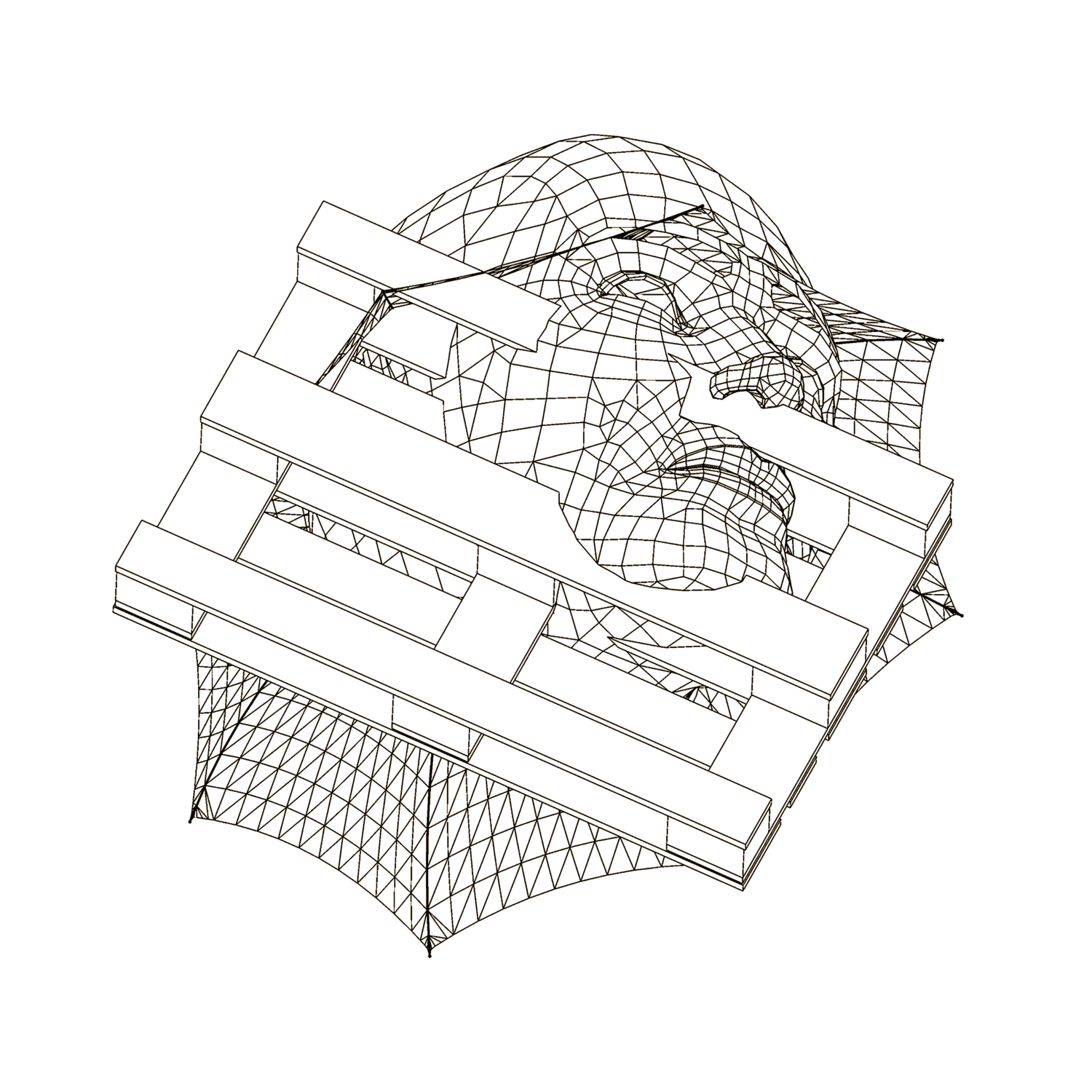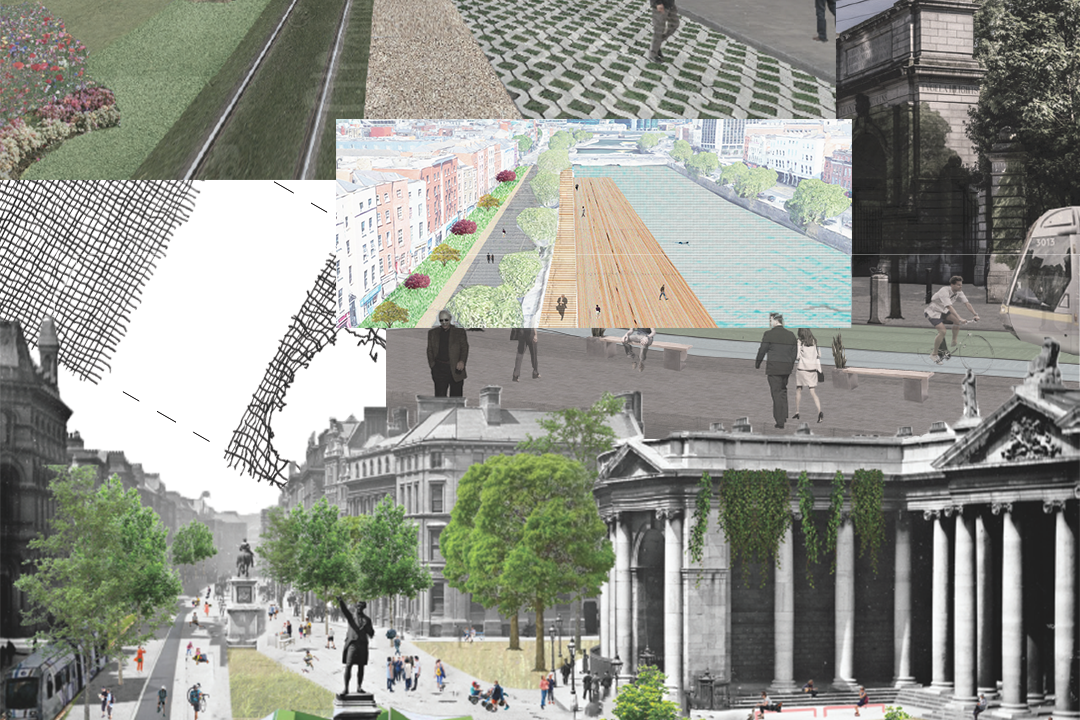Designing Dublin
After the COVID-19 crisis, we have the opportunity as citizens to be involved in designing Dublin's future.
Dublin City Council have a posted a form on their website, called the Covid Mobility Measure Request Form, that asks the public for recommendations on how to improve the city’s public space.
With the lockdown restrictions currently being eased up there are new and immediate challenges coming to the public sphere, but where there are challenges there are also great opportunities. It was recently announced that there will be a trial run of pedestrianisation around the Grafton Street area. This will commence on July 25th and will opperate between 11am and 7pm on weekends. The streets to be pedestrianised are as follows:
- Anne Street South from the junction of Dawson Street
- Duke Street from the junction of Dawson Street
- South William Street from the Brown Thomas car park exit to Chatham Row
- Drury Street from Fade Street to the Drury Street car park
- Dame Court from Exchequer Street
Dublin City Council (DCC) have listed a simple enough form on their website. The form is open to any member of the public to make suggestions as to how best DCC can improve mobility during the reopening of business and traffic in the city. They have listed the following areas to make suggestions in:
- Footpath widening
- Increasing queuing space at bus stops
- Pedestrian area
- Protected bike lanes
- Contra-flow cycle lanes
- Cycle parking facilities
- Outdoor seating area
- Commercial / Retail deliveries support
- Support and advice for active travel (walking & cycling)
- Journey planning
- Other…
We think the idea of livable public space is a vital part of a city and its culture so FAC will be looking into this concept over the next while, especially as the Covid-19 situation develops. If you have suggestions to the DCC for the city or especially for your local area we would urge you to submit the request. Even if there is a patch of land that is being underused or is leading to dumping, think about suggesting a wild flower garden to the DCC. Little things like that deter antisocial elements and also provide great habitats for the local ecosystem.
This is a great opportunity to break up the urban fabric and enact some of the changes that Dublin city is desperate for. We urge you to make a suggestion and share the form to others, along with this article. For inspiration, we have included some of the solutions proposed by GroupJ of TUD for ways to greatly improve mobility around the city center.
The main proposition put forward by GroupJ is to start looking at the most ideal areas to pedestrianise and open up the city to green spaces:
““Ireland in particular has a deep rooted history with private vehicles, stemming in part from the organisation of land into plantation settlements but eventually reinforcing this sprawling population distribution through the mass production of low density housing estates. While Dublin city is the most densely populated area in the state, relative to the number of people who commute daily for work and leisure, its transport and housing strategy is unsustainable, particularly when we recognise future trends of urbanisation.
The aim here was to investigate the regulation of private car transport and parking within the inner city centre and the reprioritise more people friendly modes of transport such as walking, cycling and public transport. We hoped that by visualising the spatial implications of this in various key locations around the city, we would show the potential our city holds and how this space could be reclaimed as a civic space open to all.”
”
We strongly agree with the group's suggestions to totally eliminate private cars from the city centre through phased stages and opening the city up to more pedestrianisation.This would ensure the city centre is reserved for cycling and walking and immensely improve the quality of life of Dublin’s residents. Dublin is a relatively tiny city by comparison to other major cities in Europe like Amsterdam and Copenhagen, where cycling is a much more frequented mode of transport.
The use of private vehicles around the city center is obviously bad for the environment in terms of emitting greenhouse gases, but they also affect our personal health. The particles that are released from the engines can seriously impact human health, they can penetrate the lungs blood barrier and enter the blood system. This can increase the risk of heart and respiratory diseases, as well as lung cancer.
These vehicles are also massive private storage trunks that we allow to park up and occupy public space, for free in most cases., It's an unfair allocation of public space to private ownership and just a complete logistical mess for the organisation of public space.
Another main component of GroupJ’s proposition is to open up the city to more green spaces. They propose more community gardens which have so many benefits like education, food security and fostering community spirit. We also have the opportunity to leave space for native Irish wildflower gardens, which again not only provide pollination sites for the city’s struggling bee population, but also can be engineered into the city scape to help with drainage, along with tree planting.
Large barren open spaces like O'Connell street that were cleared to allow through private traffic by the wide streets commission could become places to gather or commute more freely on foot if traffic is stripped away and moved to the outskirts of the city.
These are just some of the many suggestions from the group, and there are many more solutions that are working really well in European cities. We urge you to use your voice and demand a better city for living and to engage in your city's development.
This is the beginning in a series of topics we will be covering around public spaces around our city, bookmark our website and get involved with our social media, along with our posts there's other great resources like the Dublin Commuters Twitter page. They have lots of great information on what's happening in the city centre and the campaigns they highlight show great opportunities to improve the city.
All images were provided by GroupJ of TUD, please contact dsa@tudublin.ie if you wish to find out more about the project.
Dylan Daniels
We value original, substantive ideas – mainstream or alternative, progressive or conservative – and encourage everyone to join our discussion.
content@facmagazine.com












